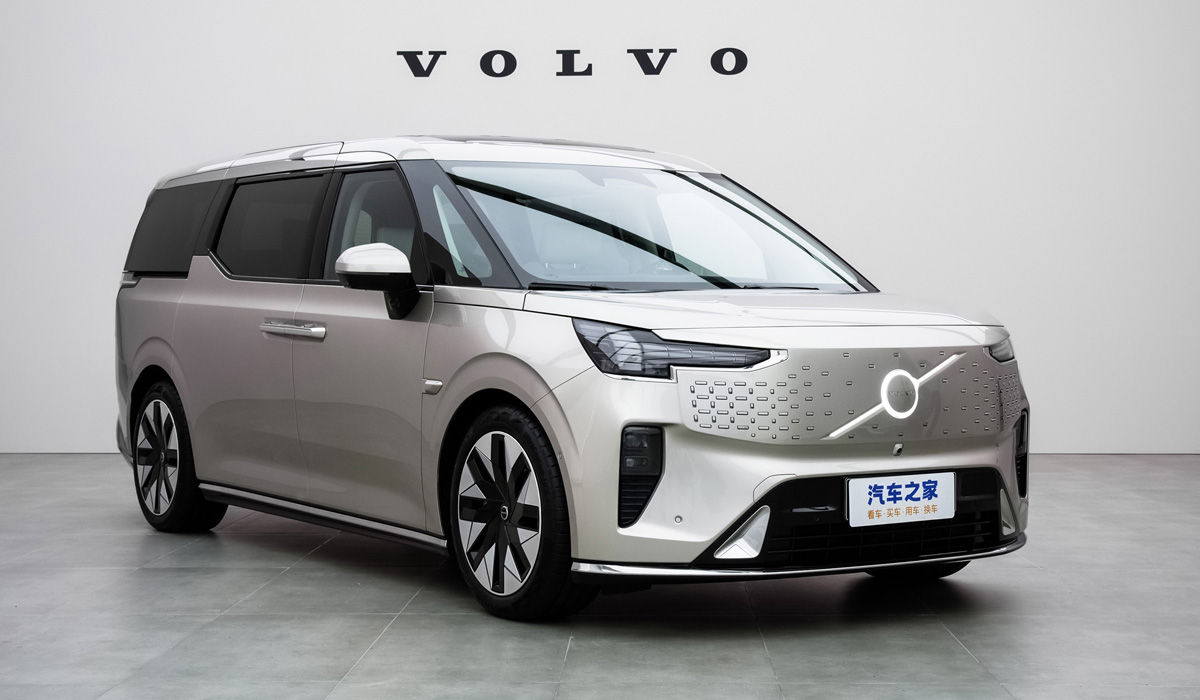
Rumors about a minivan under the Volvo brand went back in the nineties, but then the company did not dare to produce such a car. But he appeared now! Thanks to China, where large and well-equipped single-volume trucks are in excellent demand among businessmen and corporate parks. For example, Buick GL8 minivans here sell 150-170 thousand units a year. It was for China that Lexus made its first single-volume car, and such cars under local brands have appeared like mushrooms after rain in the last three years. Now Volvo is also entering this niche.

However, the latest Volvo EM90 minivan is not an original Swedish development at all. We have a modified single-volume Zeekr 009: Geely Holding introduced this model on the modular SEA platform a year ago and is already selling it on the Chinese market, and such “nines” have reached Russia by unofficial ways. The Volvo EM90 has the same body and a similar wheelbase (3205 mm), and differs from the Dhikr only in the design of the front and stern: headlights with a “hammer of Thor” and vertical taillights are made in the Volvo corporate style. The overall dimensions were almost not affected: length — 5206 mm, width — 2024 mm, height — 1859 mm. All doorways are preserved, as well as the geometry of the glass sections in the roof. The coefficient of aerodynamic drag is the same as that of the original Dhikr (0.27).
The interior has also undergone stylistic changes: the front panel, steering wheel and decor of the Volvo EM90 have their own, and the instrument screen has lost its visor, but the overall architecture and location of various elements came from a donor. The graphics of the media system (screen with a diagonal of 15.4 inches) have been revised taking into account the corporate identity.

The cabin has the same three rows of seats as the Dhikr, and both the second and third rows are designed for two riders. The second row chairs have electric drive, heating, ventilation and folding tables. To control the climate control and the servo drive of the sliding doors, sensors are built into their decoration, although they are decorated differently than in Zikra. The two minivans also have a 15.6-inch folding screen fixed to the ceiling. There is a Bowers & Wilkins audio system (21 speakers). The trunk volume is 342 liters behind the third row and 1826 liters with folded seats in the second and third rows.

Like the Zeekr 009, the Volvo minivan has air suspension, adaptive cruise control and the rudiments of autopilot. And the key difference between the two machines is in electrical engineering. If the Zeekr 009 has a twin—engine all-wheel drive (544 hp, 686 Nm) and two traction batteries to choose from (116 or 140 kWh), then the Volvo EM90 has only rear-wheel drive with one electric motor (272 hp, 343 Nm) and a base battery with a capacity of 116 kWh. By the way, Volvo started transferring its electric cars from front to rear-wheel drive a year ago.
It is clear that hurricane dynamics can not be expected: acceleration to “hundreds” takes 8.3 seconds against 4.5 seconds for Dhikr. The maximum speed, as with all modern Volvo models, is limited at 180 km/h. It is stated that a minivan with a curb weight of 2763 kg will be able to drive 738 km on a single charge according to the Chinese CLTC cycle, although the all-wheel drive Zeekr 009 with a large 140 kWh battery can cover up to 822 km according to the passport.

It would seem that with such a difference in characteristics, the Volvo EM90 should be cheaper than the Dhikr, but Geely’s marketers did not lose their heads and asked for a substantial surcharge for the historic European brand. If the Zeekr 009 in China costs 499-588 thousand yuan (68-81 thousand dollars), then for the Volvo EM90 they are asking as much as 818 thousand yuan (112 thousand dollars)!

Both models will be produced on the same conveyor of the Geely plant in China, and China will become the main market for the EM90. Export is planned only to the countries of Southeast Asia.